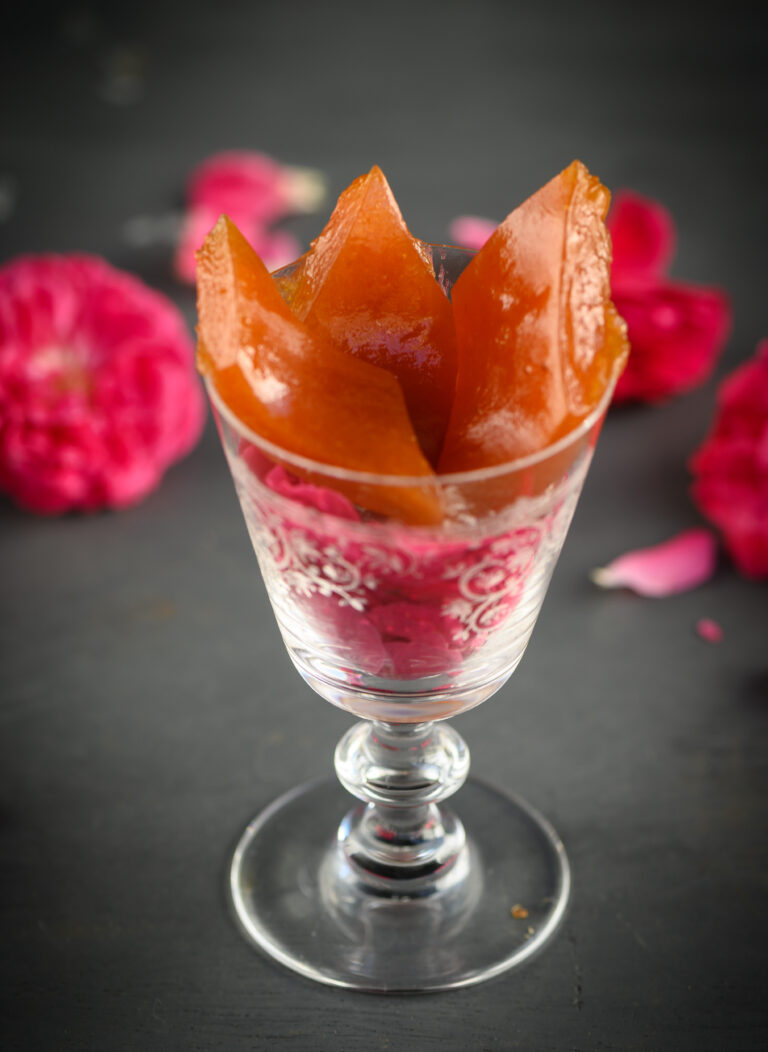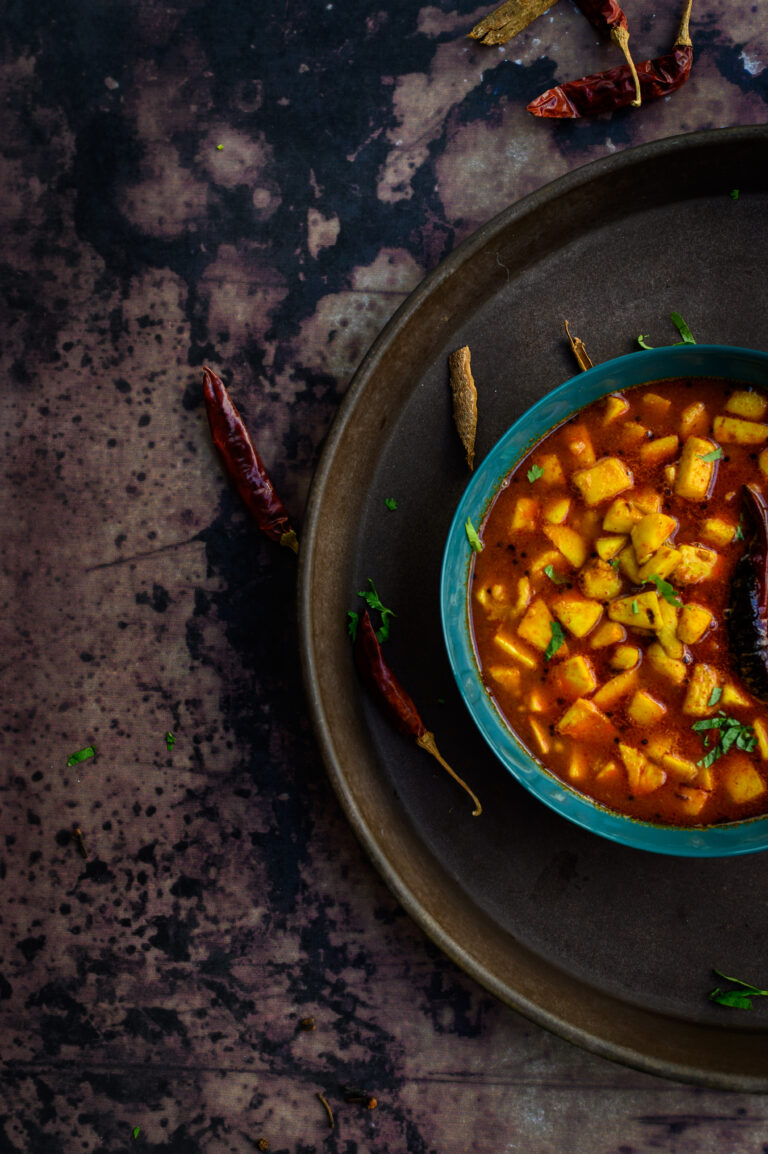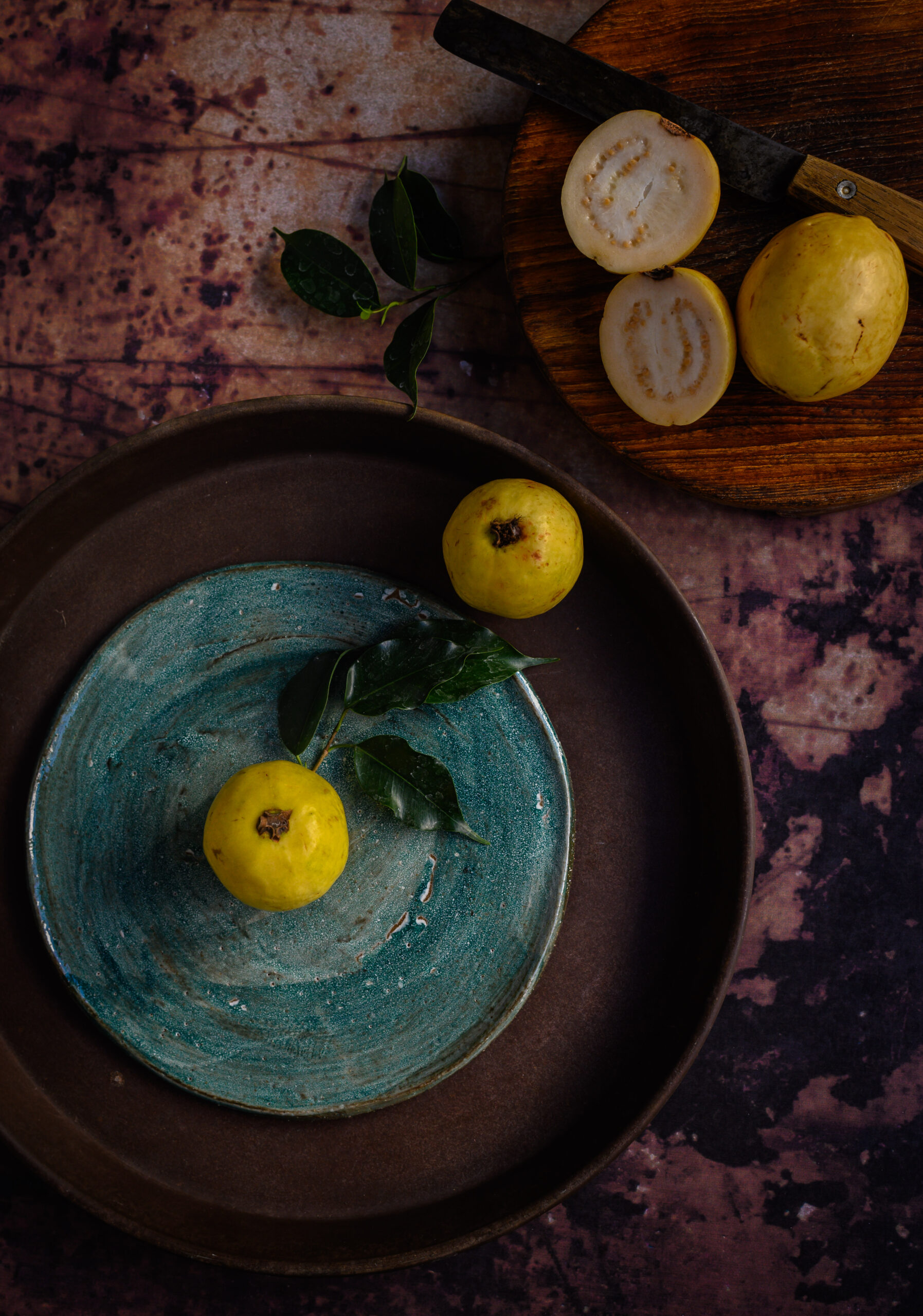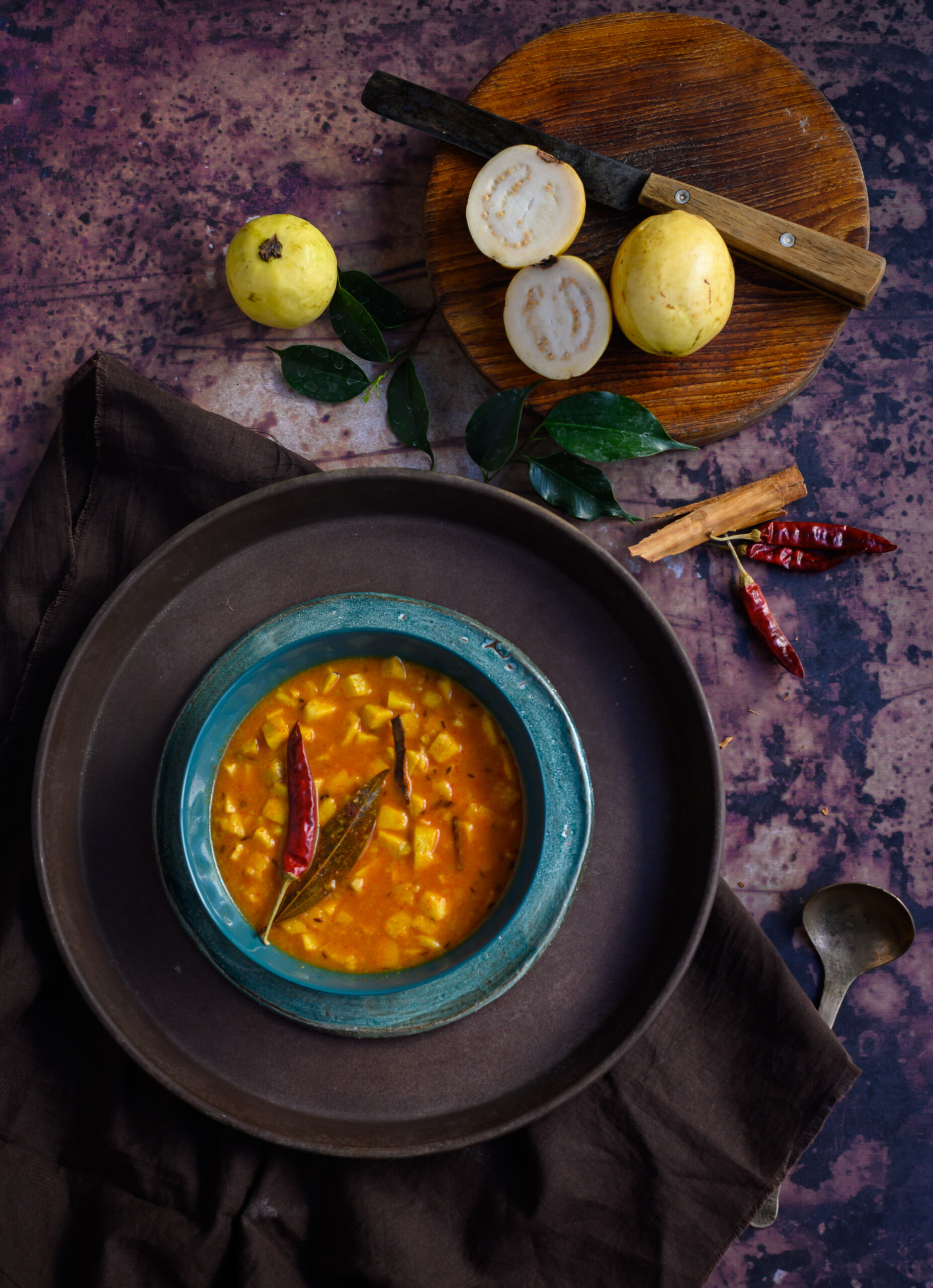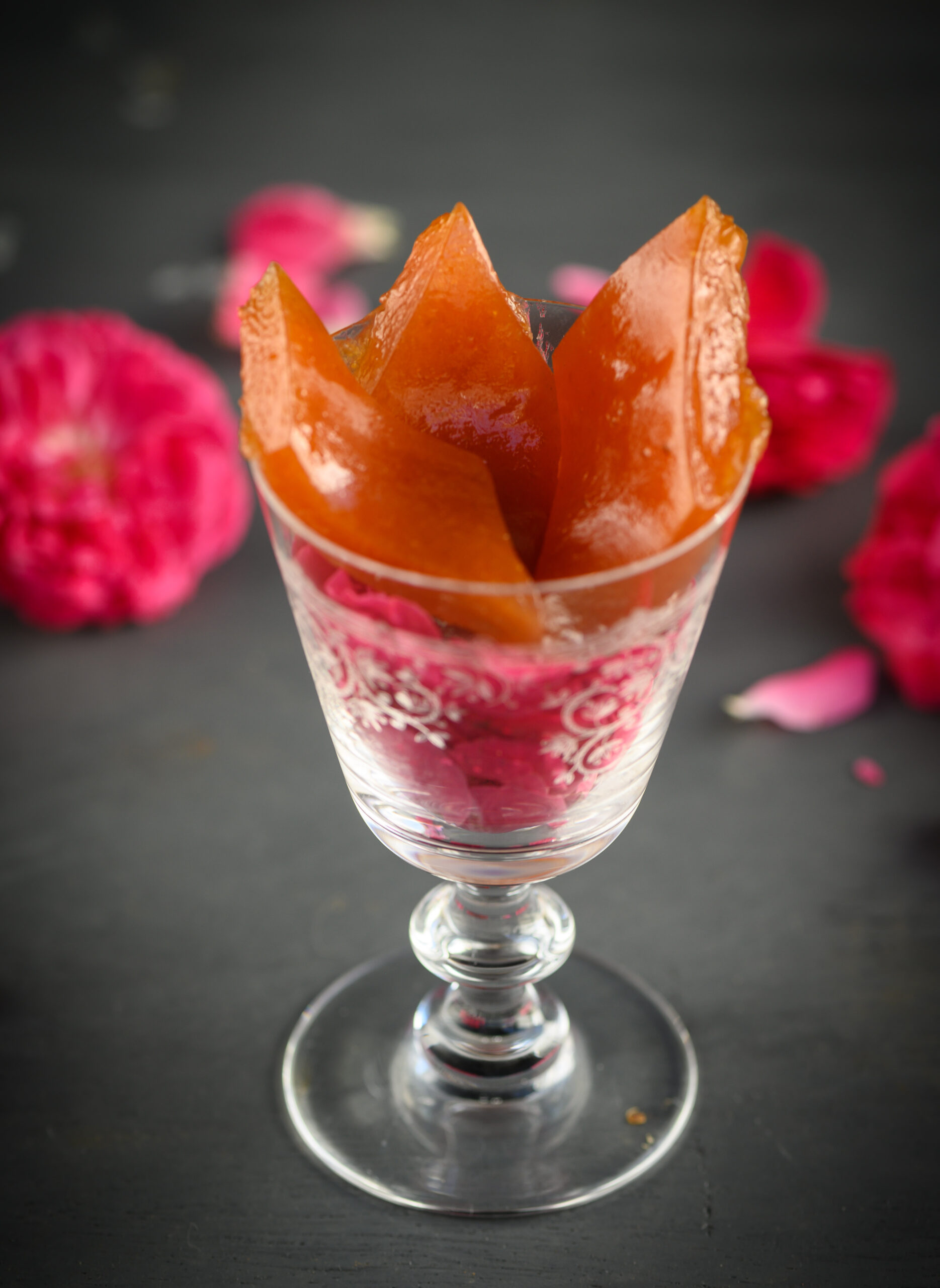
In my Gujarati household, we have always had a deep and old association with Parsees. The Dark Prince’s best friend, Sohrab, is a Parsee, and so was his grandfather’s best friend, Bachu Foi, in Ahmedabad. When we got married and his grandfather also became mine, so too did Bachu Foi. “Foi” means “paternal aunt”, and Bachu Foi was the gentlest, kindest soul I’ve ever known. When I met her, she was well into her 70s and happily single, and always seemed to be around when we visited our grandparents. In those years, I would arrive with my gaggle of toddlers who kept my hands full. Bachu Foi always knew when I was coming, and would move in with me for the duration of my visit. And she would make the best-I’ve-ever-had guava jelly. Well, I’d never had guava jelly before hers, but it set my taste for life.
Pink, sweet, luscious, diamond-shaped guava jelly. I treasured it not only because it was sweet, but because it was made by my very sweet Bachu Foi. The truth is that at the time, I was too involved with my little children to spare the time to patiently learn the recipe from her, but how I wish I had. As my culinary skills grew, over time I experimented and finally arrived at my own version. I would say it comes pretty close to what Bachu Foi used to make. After all, we both use the same basic ingredient: love.
I was not only busy with my kids, but also highly involved with trying to stay in the good books of my strict, disciplinarian grandfather. And Bachu Foi was ever on the lookout, ready to bail me out and take my side. These memories came flooding back to me on a recent trip to Ahmedabad for a book I am working on (ssshhh…). There, I met a relative of hers, an old gent who exclaimed, “Ah yes, I knew your grandpa – Bachu Foi was his girlfriend!”
I was quick to argue with him, “No, she was never his girlfriend!” Then I realised how futile it was to explain that they just shared such a beautiful friendship. I thought about how my grandmother, who was just as wonderful a person, was always around too. She was divinity personified, calm and chilled out, and not in the least threatened by Bachu Foi!
In my previous post, in which I shared a mood-uplifting Gujarati curry using the favourite fruit of my childhood, I’d mentioned that one other way in which I like to enjoy guavas is in jelly form, with a platter of crackers and a glass of wine. The combination of salty and sweet makes for a lovely treat. This was something I picked up in Cuba, during the only other time that I’ve experienced guava jelly close to Bachu Foi’s sublime creation. I was surprised to see guavas there then, not knowing their history, and brought back a big chunk of guava jelly. I later realized that they were the perfect substitute there for fig jam, which is usually served with wine, and it’s the same here. Our familiar, affordable guavas are perfect for the job.
The previous post is full of information about the goodness of guavas (they are loaded with Vitamin C), but let me be honest – this one is very, very indulgent! It is dedicated, with much love, to the memory of my Bachu Foi.
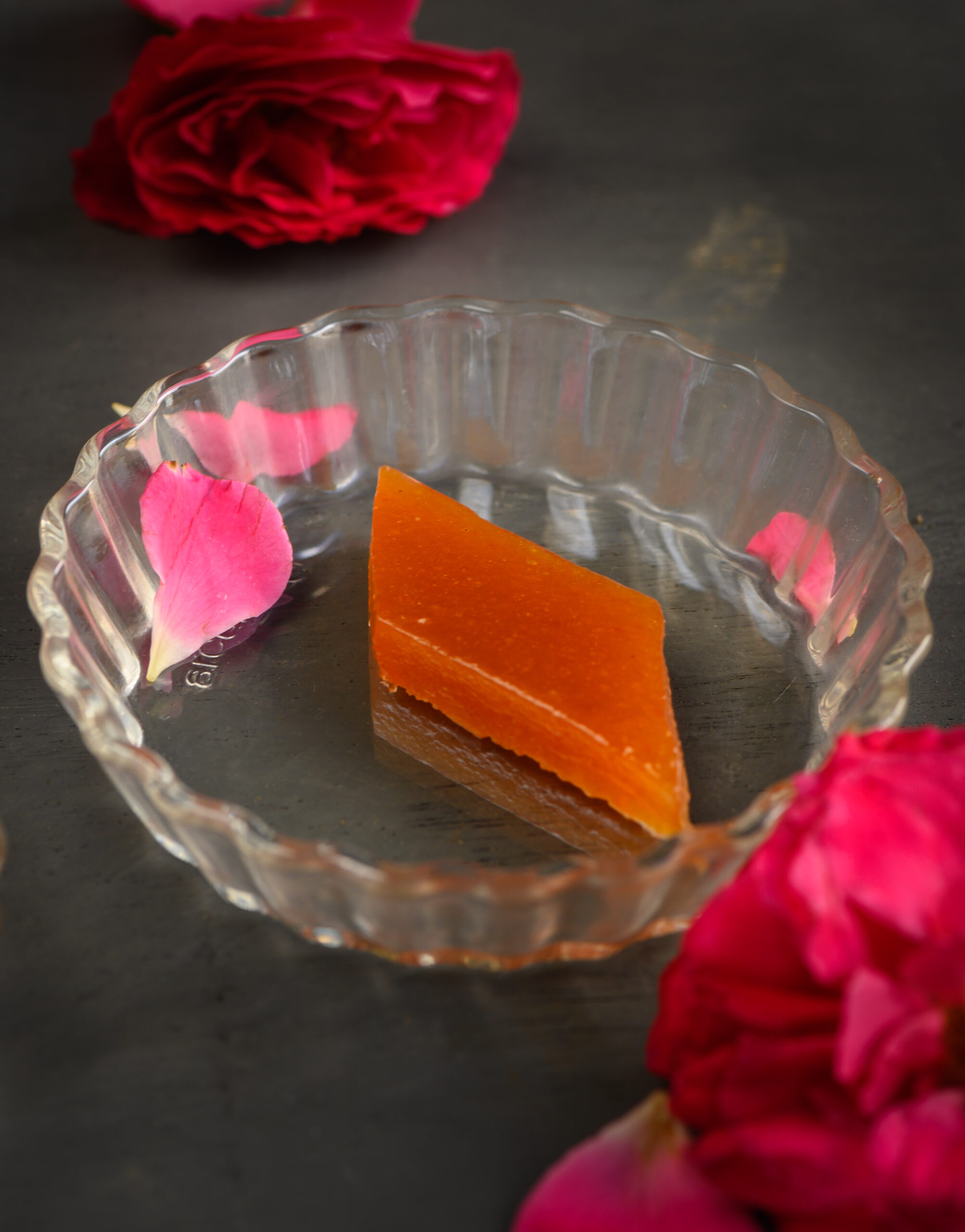
Guava Jelly
(Yield: approximately 15 pieces)
½ kilo guavas
6 cups water
¼ cup butter
1 teaspoon lemon juice
1 teaspoon rosewater
Sugar to measure
As I experimented with guava jelly recipes, I hit on what would make this one unique. One of re:store’s signature ingredients: rosewater. It adds a divine aroma to an already divine dessert. You may also know this dish by another name – sweet guava cheese.
Wash the guavas and place them in boiling water, and allow the water to bubble until the guavas turn soft. Then, remove them carefully and keep the water aside. Allow the guavas to cool slightly, then remove the skin. Next, remove the seeds from the fruit and keep them aside.
Add the seeds to 2 cups of the same water that was used to boil the guavas and allow them to cook for some more time. Cool.
Blend the flesh of the guavas and strain, along with the water containing the seeds. Collect the pulp in a pot and boil. Within a few minutes, add a quantity of sugar equivalent to the pulp. When I was making this recipe, I found that I added 3 cups. You may adjust the sugar quantity depending on the sweetness of the guavas and your own preferences.
Allow the mixture to boil, stirring constantly. This took me approximately 20-25 minutes. You will notice the pulp becoming thicker. Now, add the butter and lemon juice. Cook some more until the pulp starts to leave the edges of the pot. If you scrape to see, you should notice a dry pot.
Drop a glob of the pulp in cold water to check if it forms into a hard lump. Allow to cook some more.
Finally, add the rosewater. Stir well, and pour the thick pulp onto a greased plate. Remember that the quantity of the pulp will reduce as it cools, which you must allow it to do at room temperature for 3 hours.
Then, cut into shapes and remove gently. I use the diamond shape, just like Bachu Foi – that gem of a person – did.
You’ll find the guava jelly to be chewy, sticky and sweet. I’ve used approximate quantities in the recipe above, so do experiment and see what suits you. As I mentioned, I don’t really know how to make Bachu Foi’s exact recipe, and so I also want to share the method as to how I arrived at mine. I did it by reading at least 20 different recipes from various sources, adjusting according to my culinary sense and taste. So here’s a big Thank You to all the other food bloggers out there, especially on Instagram, who generously share their recipes too! Here’s adding mine to the collection, with love for Bachu Foi…


